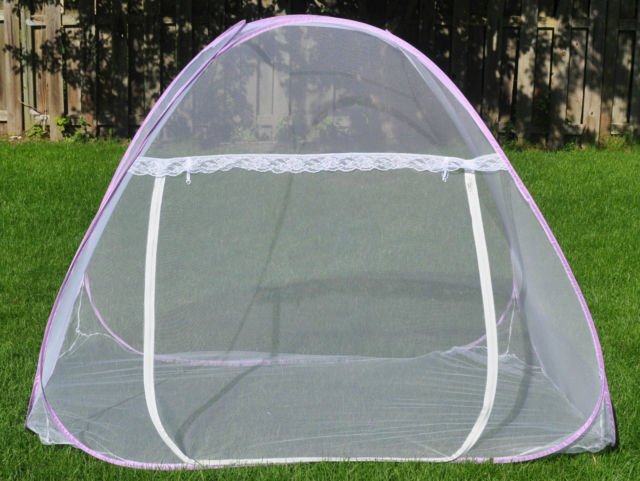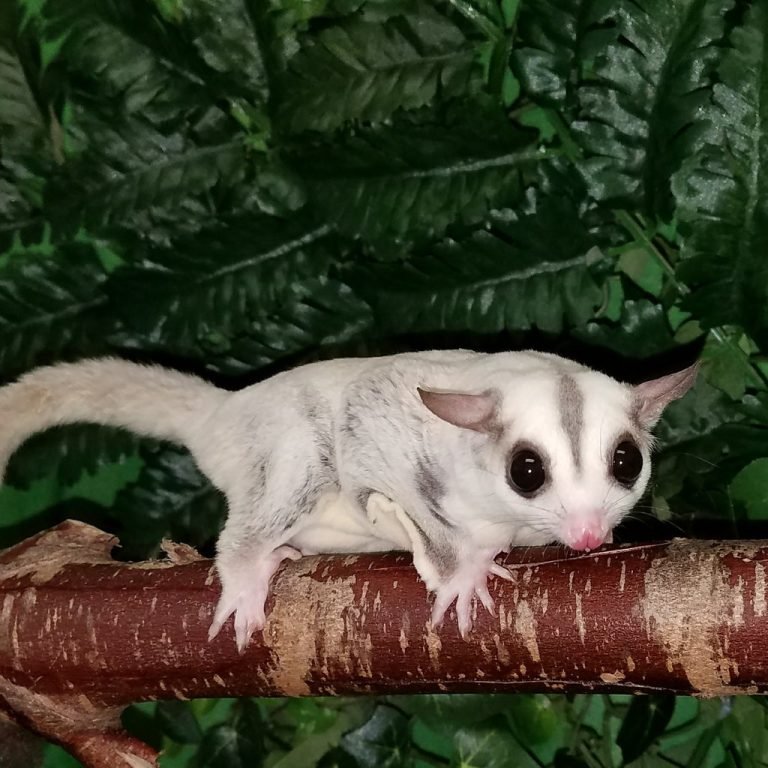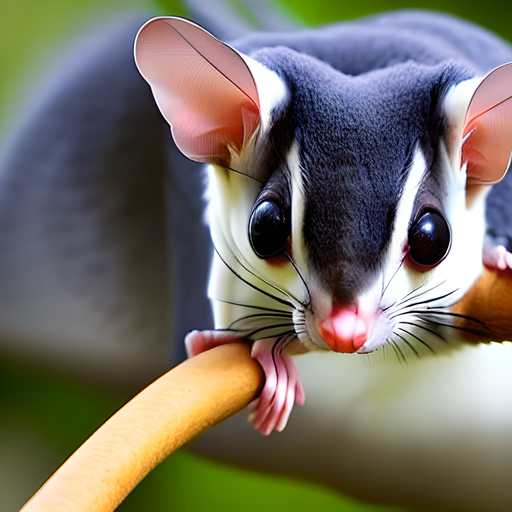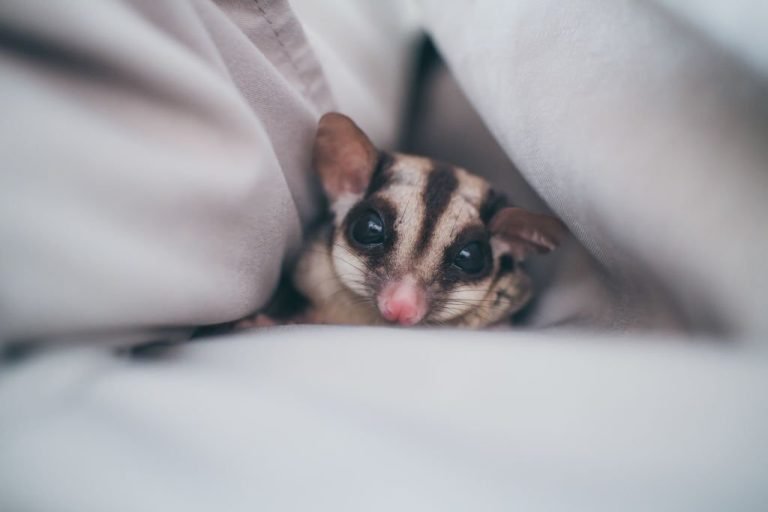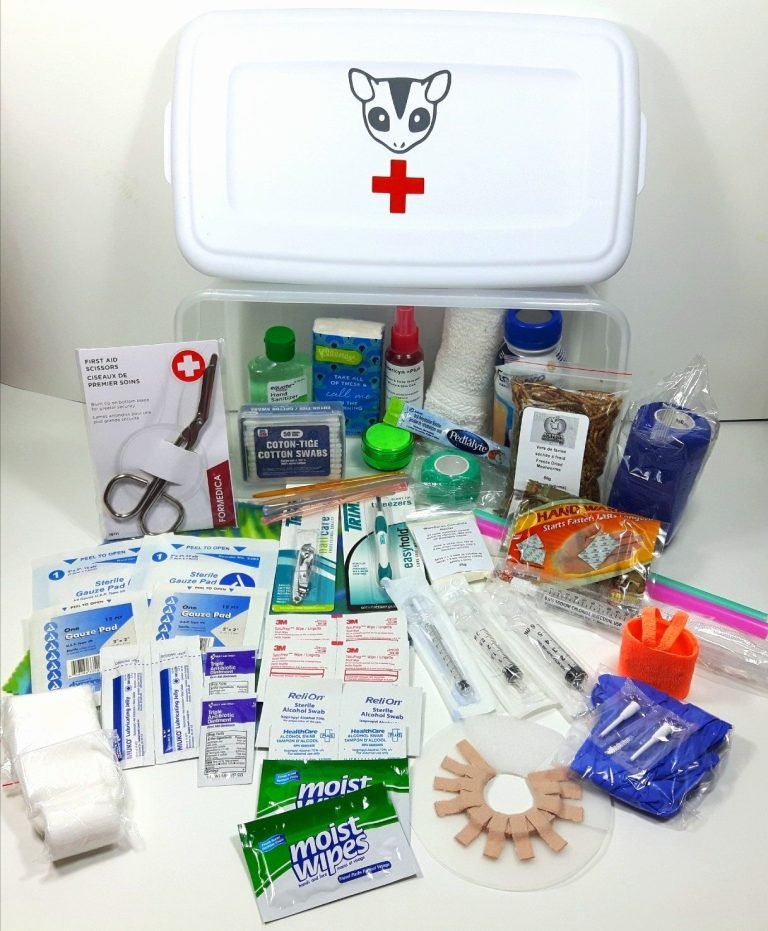How to Make Sugar Glider Toys
Sugar gliders are energetic and playful animals that require plenty of mental and physical stimulation. One way to keep them entertained is by providing them with toys to play with. However, buying toys can be expensive, and some store-bought toys may not be suitable for sugar gliders. Making your own toys can be a fun and cost-effective solution.
To make sugar glider toys, you will need to use safe and non-toxic materials that are free of sharp edges or small parts that could be swallowed. Some popular materials used to make toys include cardboard, wood, fleece, and plastic. Toys can range from simple chew toys to more complex climbing structures.
Creating toys for your sugar gliders is not only fun, but it also helps to enrich their environment and improve their overall well-being. In this article, we will provide you with some tips and ideas on how to make safe and engaging toys for your furry friends.
In this post, I’m going to show you how to make sugar glider toys. It’s going to be a pretty simple process. In fact, I’ll show you how to make them in less than an hour.
Why are sugar glider toys important?
Sugar gliders are active and intelligent creatures that require a lot of physical and mental stimulation to stay happy and healthy. Toys play a crucial role in providing this stimulation and preventing boredom, which can lead to destructive behavior and health issues. Here’s a list of reasons why sugar glider toys are important:
Mental stimulation
Sugar gliders are intelligent animals that require mental stimulation to prevent boredom and promote their well-being. Toys provide a way for them to engage in playful activities that keep their minds active.
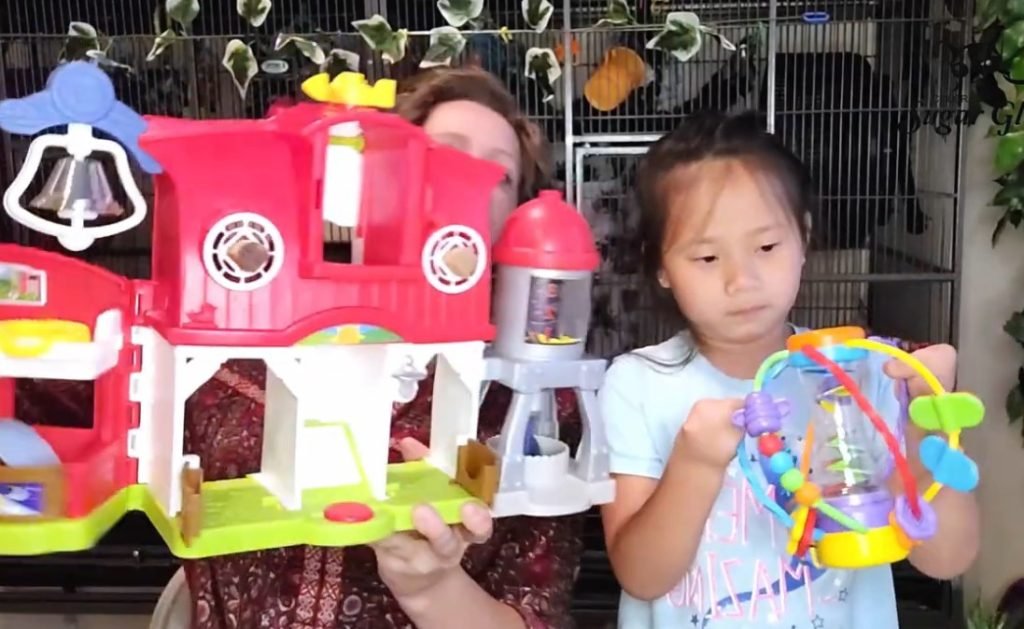
Physical exercise
Sugar gliders are active animals that need exercise to stay healthy. Toys provide a way for them to engage in physical activities that keep them active and fit.
Dental health
Sugar gliders’ teeth continuously grow throughout their lives, so they need to chew on things to keep them trimmed. Toys that are safe to chew on can help maintain their dental health.
Bonding
Playing with toys can be a great way to bond with your sugar glider. It allows them to associate positive experiences with you and can strengthen your relationship.
Enrichment
Sugar gliders in the wild have a variety of activities and environments to explore. Toys can help provide a similar level of enrichment in captivity, making their living environment more stimulating and satisfying.
Preventing destructive behavior
Without appropriate toys to play with, sugar gliders may resort to destructive behavior, such as chewing on furniture or other household items. Toys can provide an appropriate outlet for their natural chewing and playing behaviors.
List Of Materials Required For Making Sugar Glider Toys
To make sugar glider toys, you will need various materials that are safe and suitable for your pet. Here is a list of materials that you can use:
- Non-toxic wood: Choose untreated, non-toxic wood that is safe for your sugar glider to chew on. Examples include pine, maple, and birch.
- Vine balls: These are great for hiding treats or just as a toy to play with.
- Shredded paper: Use non-toxic, unbleached paper that can be shredded to make nesting material.
- Fleece fabric: Soft fleece can be used to create cozy pouches and hammocks for your sugar glider to snuggle in.
- Natural rope: Make sure to use natural rope that is untreated and free from chemicals.
- Plastic chains and links: These are safe for sugar gliders to climb on and play with.
- PVC pipes: Cut PVC pipes into different lengths and shapes to create tunnels and hiding spots.
- Bells and beads: These can be used to add sound and texture to your sugar glider’s toys.
Always make sure to supervise your sugar glider when playing with toys and regularly inspect them for signs of wear and tear.
Importance Of Choosing Safe Materials
Here is the importance of choosing safe materials for making sugar glider toys:
- Safety for your pet: Sugar gliders are small and curious animals that love to chew on anything they can get their hands on. Choosing safe materials for their toys ensures that they won’t accidentally ingest anything harmful.
- Avoid toxic chemicals: Many materials used in manufacturing or crafting may contain toxic chemicals that could be harmful to your sugar glider’s health. Choosing safe materials like untreated wood, natural fabrics, and food-grade plastic reduces the risk of exposing your pet to harmful chemicals.
- Durability: Safe materials like wood and natural fabrics are typically more durable than synthetic materials. This means that the toys you make will last longer and won’t need to be replaced as frequently, saving you money in the long run.
- Encourages natural behavior: Using materials like wood, bark, and rope encourages your sugar glider’s natural behavior of climbing, chewing, and exploring.
- Environmentally friendly: Using safe and natural materials for your sugar glider toys is also better for the environment since they are biodegradable and less likely to end up in landfills.
Choosing safe materials for making sugar glider toys is crucial for your pet’s health, wellbeing, and enjoyment.
Different Types of Toys for Sugar Gliders

There are different types of toys that are suitable for sugar gliders, including climbing toys, pouches, balls, and chew toys. These toys provide physical and mental stimulation, encourage natural behaviors, and help prevent boredom and stress in sugar gliders.Bellow the different types of toys making process:
1.Hanging Toys For Sugar Gliders
Hanging toys for sugar gliders are toys that are suspended from the cage’s roof and are intended to provide entertainment and exercise for sugar gliders by encouraging them to climb, jump, and swing. These toys can be made using various materials and can be designed in a variety of shapes and sizes, providing a variety of textures and surfaces for gliders to explore. Hanging toys can be an essential component of a sugar glider’s enrichment, providing both physical and mental stimulation.
Materials needed for making hanging toys
Materials needed for making hanging toys for sugar gliders:
- Cotton rope or twine
- Natural wood or bamboo sticks
- Bird-safe bells or charms
- Safe and non-toxic beads or wooden blocks
- Scissors
- Pliers
Note: It’s important to avoid using materials such as plastic or dyed materials, as they can be harmful to your sugar glider if ingested.
Step-by-step instructions for making a hanging toy
To make a hanging toy for sugar gliders, follow these steps:
- Cut strips of fleece or other safe fabric into 1-inch-wide and 8-inch-long pieces.
- Tie a knot in the middle of each strip to create a loop.
- Braid the strips together tightly.
- Tie a knot at each end of the braid.
- Attach a metal ring or clip to one end knot.
- Hang the toy in the sugar glider’s cage using the metal ring or clip.
- Cut additional fabric strips and tie them to the bottom of the braid for added texture and interest.
It’s important to ensure that all materials used are safe for sugar gliders to chew and play with. Supervise your gliders while they play with their toys and regularly inspect them for any signs of wear or damage.
2.Climbing Toys For Sugar Gliders
Climbing toys for sugar gliders are toys that are designed to allow sugar gliders to climb and explore their environment. These toys are typically made from materials such as ropes, branches, and ladders, and can be hung from the top of the cage or attached to the sides. Climbing toys are important for sugar gliders’ physical and mental health, as they provide exercise and mental stimulation. They can also mimic the natural environment of sugar gliders in the wild, which helps to reduce stress and promote natural behaviors.
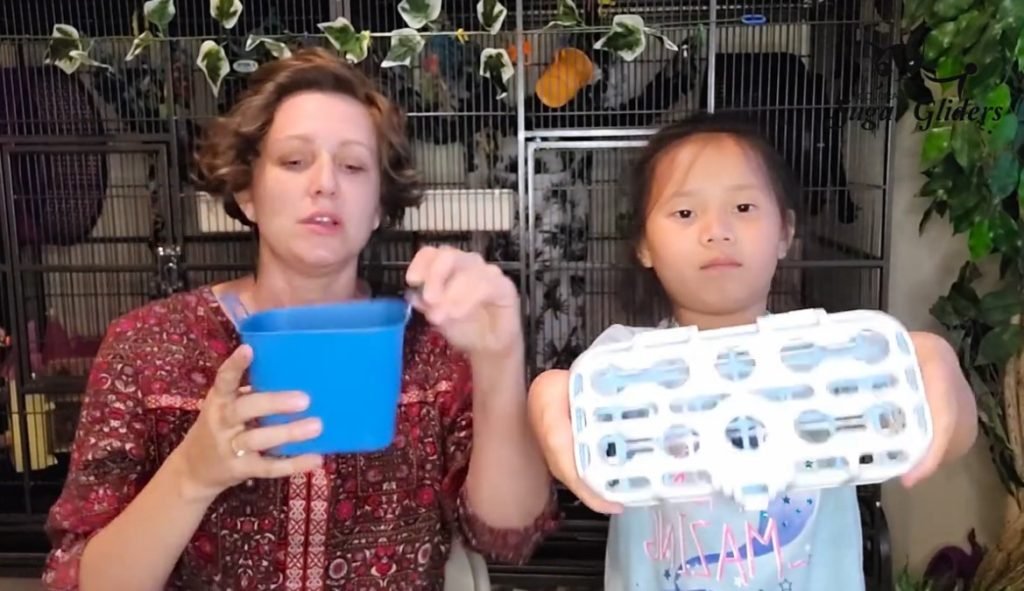
Materials needed for making climbing toys
Here’s a list of materials needed for making climbing toys for sugar gliders:
- Natural wood branches or dowels
- Non-toxic rope or twine
- Small carabiners or metal clasps
- Safe wood glue
- Unbleached cotton or fleece fabric strips
- Scissors
- Drill and drill bit
- Sandpaper
- Non-toxic wood stain or sealant (optional)
Step-by-step instructions for making a climbing toy
Here are the step-by-step instructions for making a climbing toy for your sugar glider:
- Gather all the necessary materials, including wooden dowels, sisal rope, and safe adhesive.
- Cut the wooden dowels to the desired length, ensuring they are long enough for your sugar glider to climb on.
- Drill small holes on either end of the dowels.
- Thread a length of sisal rope through each hole, knotting it securely at each end.
- Apply a safe adhesive to the dowels and wrap them in additional sisal rope, securing it tightly to create a textured surface for your sugar glider to grip onto.
- Once the adhesive is dry, attach the dowels to your sugar glider’s cage at different angles and heights, creating a fun climbing structure.
- Monitor your sugar glider while they use the climbing toy to ensure its safety and make any necessary adjustments.
Remember to always use safe and non-toxic materials when making toys for your sugar glider.
3.Foraging Toys For Sugar Gliders
Foraging toys are designed to provide sugar gliders with mental and physical stimulation by encouraging them to search for food. These toys typically have small compartments or pockets where treats or food can be hidden, allowing the gliders to use their natural foraging instincts to find their meal. Foraging toys can also help prevent boredom and promote healthy eating habits in sugar gliders.
Materials needed for making foraging toys
Here are the materials needed for making foraging toys for sugar gliders:
- Small cardboard boxes or paper cups
- Non-toxic glue
- Natural sisal rope or jute twine
- Small paper bags
- Non-toxic food coloring
- Scissors
- Treats for foraging, such as mealworms or fruit
Keep in mind that these materials are just suggestions and can be customized based on your own preferences and what is safe for your sugar glider to play with. Always prioritize safety when making toys for your pet.
Step-by-step instructions for making a foraging toy
Here are the step-by-step instructions for making a foraging toy for your sugar glider:
- Gather your materials, including a small cardboard box, non-toxic glue, scissors, and foraging materials such as mealworms or small treats.
- Cut a hole in the side of the box that is big enough for your sugar glider to reach inside.
- Fill the box with foraging materials and treats.
- Cut a piece of cardboard to fit over the hole and secure it with non-toxic glue.
- Use a pen or pencil to poke small holes in the top of the box.
- Thread a small piece of string through the holes and tie a knot at the top to create a hanging loop.
- Hang the foraging toy in your sugar glider’s cage and watch as they explore and forage for treats. Remember to supervise your glider while they play to ensure their safety.
4.Pouches and Sleeping Toys For Sugar Gliders
Pouches and sleeping toys for sugar gliders are items that provide a cozy and safe place for these small animals to sleep and rest. Pouches can be made from soft materials and hung in their enclosure, while sleeping toys can be made with soft fabric and stuffing to provide comfort and warmth.
Materials needed for making pouches and sleeping toys
Here’s a list of materials needed for making pouches and sleeping toys for sugar gliders:
- Fleece fabric
- Scissors
- Sewing machine or needle and thread
- Pins
- Ruler or measuring tape
- Fabric marker or chalk
- Optional: batting or stuffing material for extra cushioning
Step-by-step instructions for making a pouch or sleeping toy
Here are the step-by-step instructions for making a pouch or sleeping toy for sugar gliders:
- Choose a soft, non-toxic fabric for the pouch or sleeping toy. Cotton, fleece, and flannel are good options.
- Cut two identical pieces of fabric in a shape that will allow your sugar glider to comfortably fit inside.
- Place the two pieces of fabric together, with the patterned sides facing each other.
- Sew around the edges of the fabric, leaving a small opening for turning the pouch right side out.
- Turn the fabric right side out and sew the small opening shut.
- If making a sleeping toy, stuff the fabric with a non-toxic stuffing material such as cotton or wool.
- Attach a sturdy clip or fastener to the pouch or sleeping toy to hang it securely in your sugar glider’s cage.
Remember to regularly check the pouch or sleeping toy for signs of wear and tear, and replace it if necessary to ensure the safety and comfort of your sugar glider.
Common Mistakes To Avoid When Making Sugar Glider Toys
Here are some common mistakes to avoid when making sugar glider toys:
- Using toxic materials: Make sure to choose materials that are safe for sugar gliders to play with and chew on, such as untreated wood, natural fibers, and non-toxic dyes.
- Choosing inappropriate sizes: Toys that are too small can be a choking hazard, while toys that are too large can be difficult for sugar gliders to play with. Make sure to choose appropriate sizes for your gliders.
- Neglecting to supervise playtime: Always supervise your sugar gliders when they’re playing with toys to ensure they don’t get tangled, hurt, or ingest something they shouldn’t.
- Not providing enough variety: Sugar gliders love to explore and play with a variety of toys, so make sure to offer a mix of hanging, climbing, foraging, and sleeping toys to keep them stimulated and engaged.
- Overcomplicating designs: Keep toy designs simple and easy for your gliders to play with. Too many small parts or complicated designs can be overwhelming and frustrating for them.
By avoiding these common mistakes, you can ensure your sugar gliders have safe, fun, and stimulating toys to play with.
Final Thought
In conclusion, making toys for your sugar glider can be a fun and rewarding experience for both you and your pet. By using safe materials and following the proper steps, you can create a variety of stimulating toys that will keep your sugar glider happy and healthy.
From hanging toys to climbing toys and foraging toys, there are many different types of toys you can make to provide enrichment for your pet. By paying attention to your sugar glider’s behavior and preferences, you can create customized toys that they will love to play with. Remember to always supervise your pet while they are playing with toys, and replace any damaged or worn toys to ensure their safety.
With some creativity and effort, you can provide your sugar glider with a fun and engaging environment that will enhance their quality of life.
FAQs
1.What materials are safe for sugar gliders?
Safe materials for sugar gliders include natural materials such as untreated wood, rope made of cotton or hemp, and non-toxic plastics. It’s important to avoid materials like rubber and materials treated with chemicals or pesticides.
2.Can sugar gliders play with bird toys?
Sugar gliders can play with some bird toys, but it’s important to choose ones that are safe for them to use. Avoid toys that have small parts that can be easily swallowed, and make sure the materials used in the toy are safe for sugar gliders to chew on. It’s best to stick with toys specifically designed for sugar gliders to ensure their safety.
3.What toys do sugar gliders like?
Sugar gliders like toys that are safe, stimulating, and provide opportunities for climbing, playing, and foraging. Some examples include hanging toys, climbing toys, foraging toys, and sleeping pouches. It’s important to provide a variety of toys to keep them mentally and physically stimulated.
4.Can sugar gliders play with straws?
It is not recommended to give sugar gliders straws as toys, as they can potentially chew and ingest small pieces, which can cause blockages in their digestive system. It’s safer to stick to toys specifically designed for sugar gliders.
5.Can sugar gliders chew wood?
Yes, sugar gliders can chew on certain types of wood, such as apple, willow, or vine wood, as long as the wood is untreated and not coated in any harmful substances. It’s important to monitor them while they are chewing to make sure they don’t swallow any large pieces that could cause harm.


